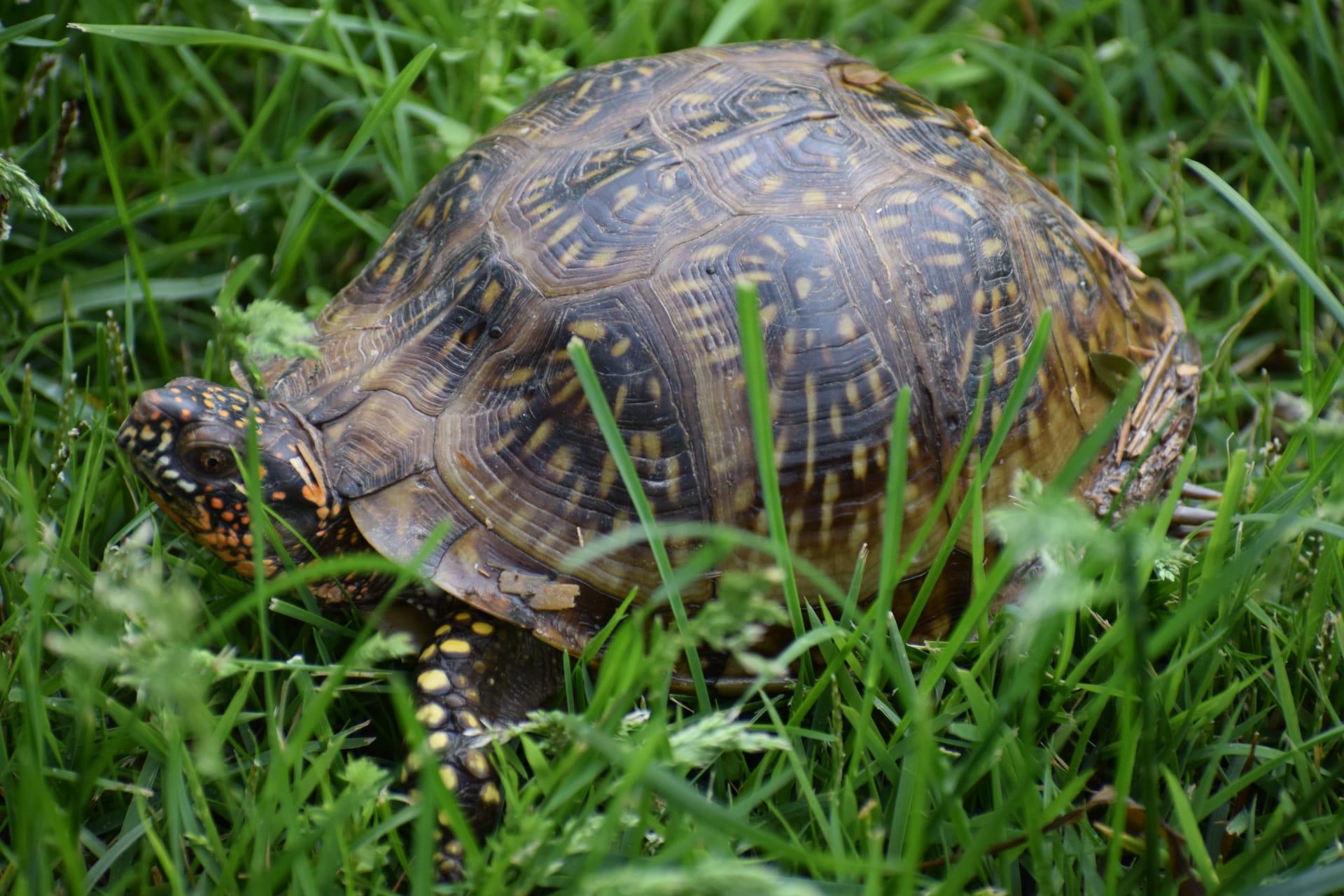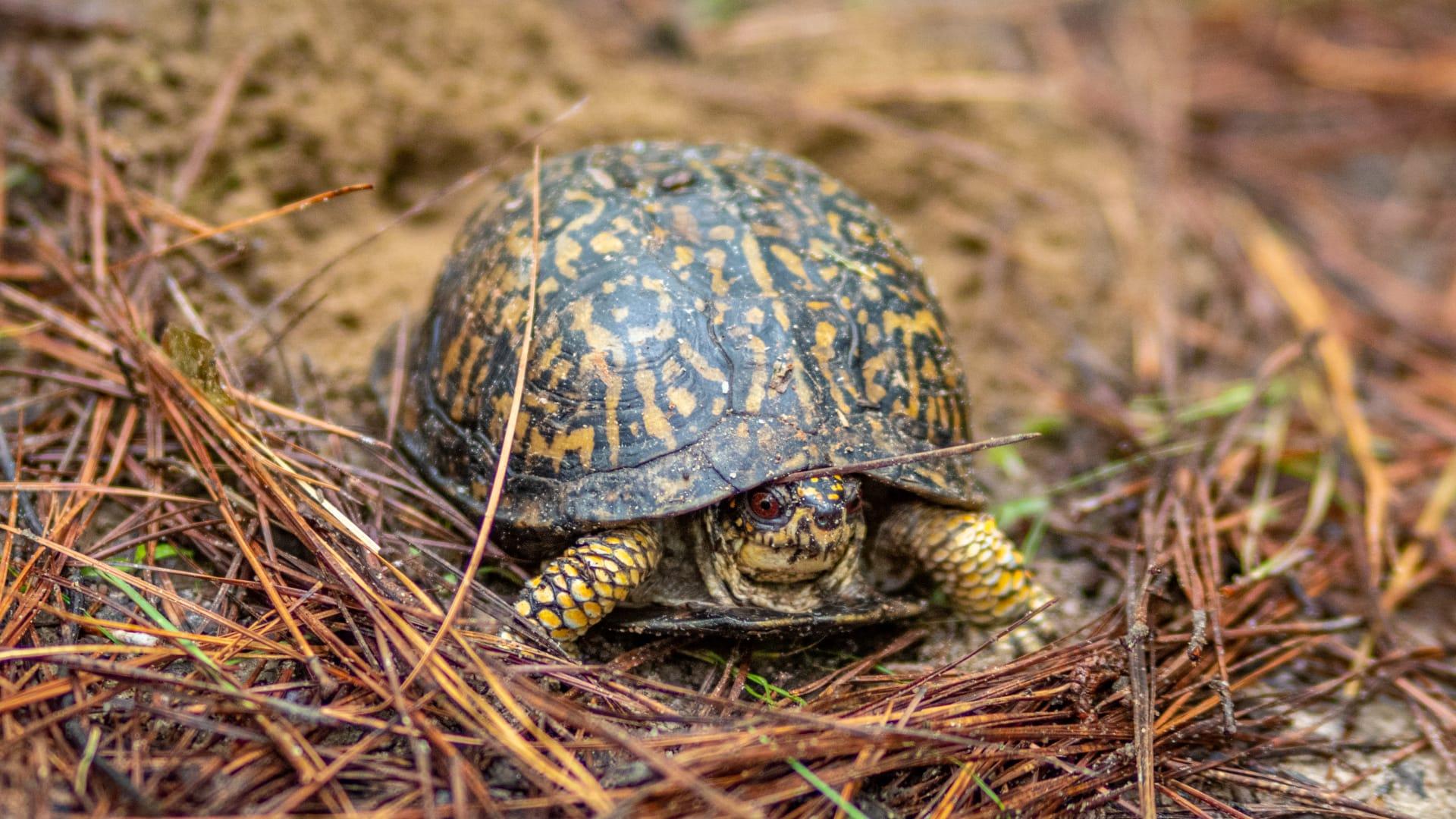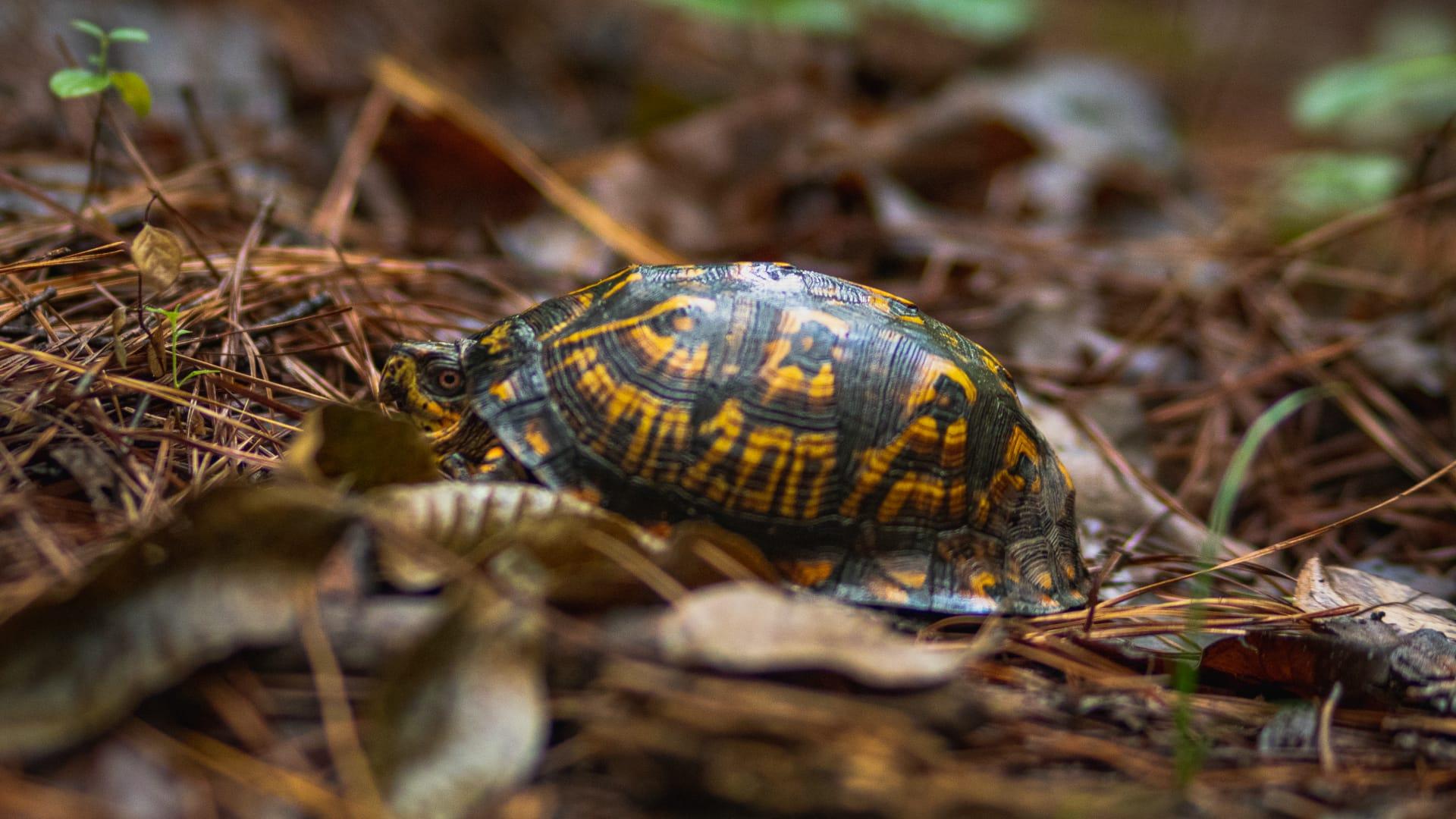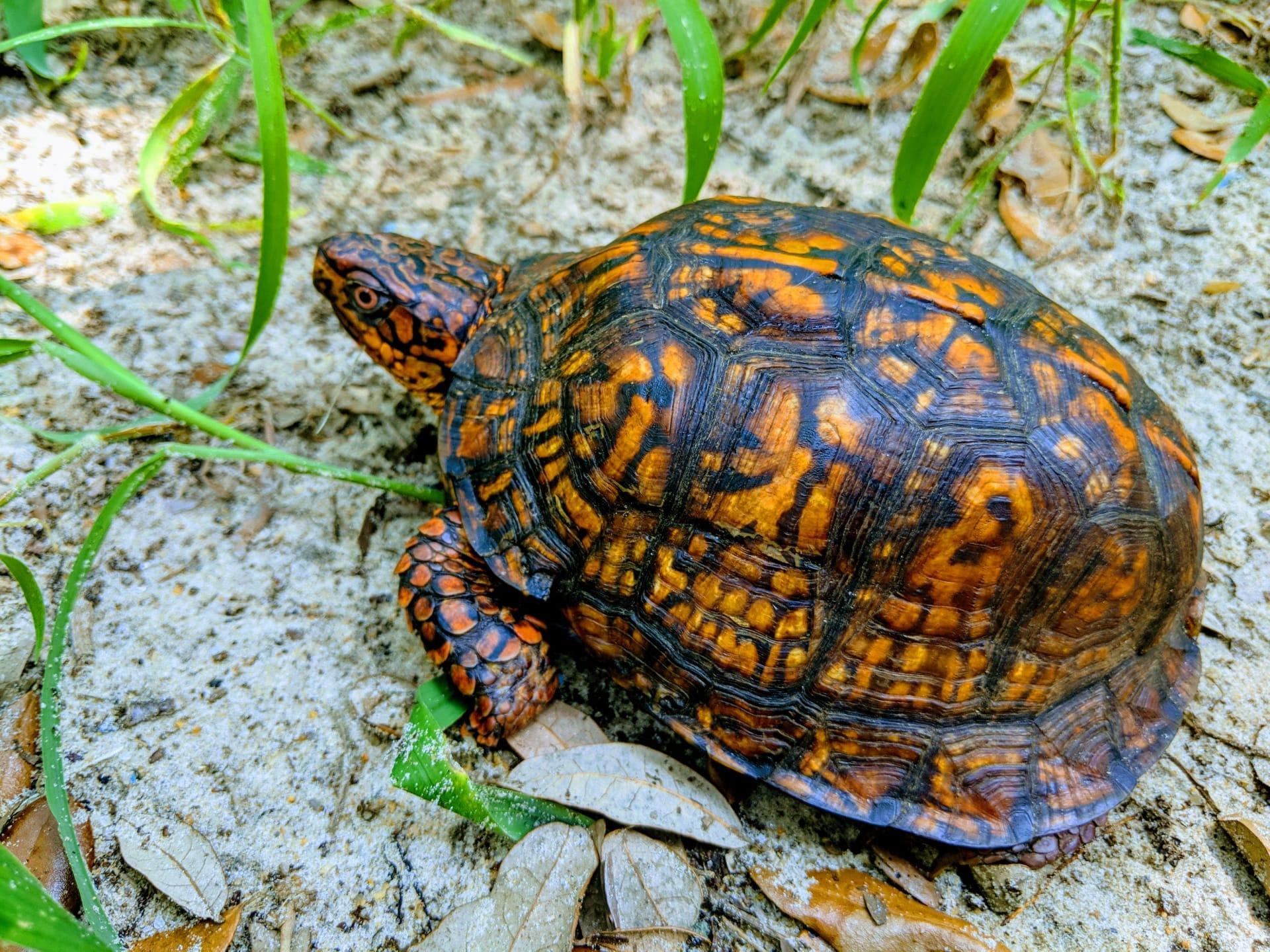Box Tortoise Characteristics
- Home /
- Mini Encyclopedia /
- Animal /
- Box Tortoise Characteristics
1
Box Tortoises, fascinating creatures, stand out with their distinct physical characteristics. On average, these tortoises measure about 4 to 6 inches in length. However, some can grow up to 8 inches. Their lifespan is impressive, with many living up to 50 years in the wild. Some have even reached the venerable age of 100 in captivity! Their domed shells, which are highly effective protective structures, are notable for their hinge-like mechanism. This feature allows the tortoise to completely enclose itself, hence the name 'box'.
The most remarkable organ of the Box Tortoise is its shell. Made up of around 50 bones, including the spine and ribs, the shell serves as both armor and a mobile home. Its upper part, the carapace, is highly domed and often adorned with eye-catching patterns that blend into their natural habitat. The lower part, the plastron, is hinged, enabling the tortoise to tightly close its shell, effectively shielding itself from predators. This unique adaptation provides a level of defense unrivaled in the reptile world.

2
Question: What do Box Tortoises typically eat?
Answer: Box Tortoises are omnivores with a diet reflecting their natural surroundings. They primarily munch on a variety of grasses, fruits, and vegetables. In the wild, they might also consume insects, worms, and even carrion. It's important for them to have a diet rich in calcium for healthy shell development. Their eating habits, which include slow, methodical chewing, are adapted to extract maximum nutrition from their often sparse environment.

3
Box Tortoises are not known for speed, but their movement is well-suited to their lifestyle. They typically walk at a leisurely pace of about 0.17 to 0.3 miles per hour. Despite their slow gait, they are adept at maneuvering through their habitat, often traveling considerable distances in search of food or mates. Their sturdy legs and webbed feet are designed for walking on a variety of surfaces, from soft forest floors to rugged terrain.
In terms of hunting, Box Tortoises are not active predators. Their diet consists of food they can find or catch without much effort. This includes munching on vegetation, fallen fruits, and occasionally slow-moving insects or snails. Their eating strategy is more about foraging and less about the chase, reflecting their slow-paced lifestyle and energy conservation strategy.

4
The Box Tortoise typically inhabits moist forested areas, grasslands, and even semi-arid environments. They prefer regions with a mix of open land and shaded areas. Access to a water source is crucial for their survival. They are often found near ponds, streams, or damp areas where they can hydrate and regulate their body temperature.
Reproduction in Box Tortoises involves unique mating rituals, often beginning with a circling and bobbing dance. Females lay a small clutch of eggs, usually 3 to 5, in a nest dug into the soil. These eggs incubate for about 70 to 90 days. The hatchlings are self-sufficient from birth and measure just around 1.5 inches, a stark contrast to their adult size. Parental care is minimal, with the young left to fend for themselves, a common trait among many reptile species.

5
Book: "The Secret Life of Box Tortoises" explores the hidden world of these charming reptiles. Published in the United States in 2010 by Dr. Jane Green, a renowned herpetologist, the book delves into their behaviors, habitats, and conservation. Green's engaging narrative combines scientific insights with fascinating anecdotes, making it a great read for both experts and casual enthusiasts.
Book: "Box Tortoises: A Journey Through Time" takes readers on a historical journey through the eyes of these ancient creatures. Authored by British naturalist Richard Thomson in 2015, it traces the evolutionary history and cultural significance of Box Tortoises. Thomson's compelling storytelling and comprehensive research provide a captivating overview of these tortoises, highlighting their impact on various civilizations throughout history.